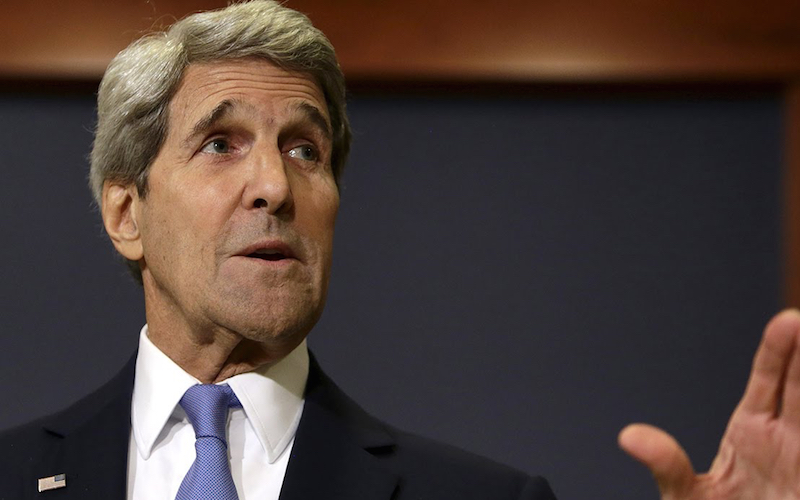
‘Retaining the Dream’: The U.S.-Iran Nuclear Deal
The comprehensive agreement of the Iran Nuclear Program is a part of a discussion (final phase) among Iran and the P5+1 — United States, Russia, China, France, United Kingdom and Germany along with the European Union which have been reviewing Iran’s Nuclear program. Here the “P5+1” refers to the five permanent members of the United Nations Security Council, China, France, Russia, the United Kingdom, the United States, plus Germany. The agreement was to be reached on the basis of the Geneva Agreement which officially came to be known as the Joint Plan of Action (JPA). The Geneva agreement was an interim deal in which Iran agreed to roll back some changes in exchange for relief from some sanctions which were imposed by the West on 20th January 2014. The parties agreed to extend their talks to 24th November 2014, while a second extension deadline was set for 1 July 2015.
The Nuclear Deal
Under this agreement, Iran will reduce its installed enrichment centrifuges from 19,000 to 6,000, out of which only 5,000 will be running. All of these centrifuges will be of first generation while none of the advanced models would be used after a time span of 10 years. Its R&D will be comprised of more efficient designs and its plans will be reviewed by the IAEA.
Iran’s second enrichment facility Fordow, which is located deep in the mountains (considered by many as unapproachable even by conventional bomber aircrafts), will cease all its nuclear enrichment plans and will function as a basic physics research centre. It will not produce or store fissile material for the next 15 years.
Iran will also reduce its stockpiles of low enriched uranium (which can be used as weapons grade uranium) from 10,000kg to 300kg for the next 15 years. Iran’s alternative “plutonium” path for a bomb, has also been addressed by the West. The heavy water reactor at Arak will be redesigned and its original core (which has the ability to produce weapons grade plutonium) will be destroyed. No heavy water reactor will be built by Iran in the next 15 years.
All these agreements hinge on the assurance that “Iran will abide” by the terms of the agreement. With no history of nuclear or weapons inspection and Iran’s history of deception about its nuclear program, it’s hard for the west to understand that Iran has changed.
Under these agreements, IAEA inspectors will be able to inspect plants thoroughly, or if they are “suspicious.” The agreement further states that Iran will address the IAEA’s clause for what experts call as Possible Military Dimensions (PMDs) of its nuclear program. These IAEA powers will remain in place indefinitely and are more sweeping than those it has under the normal safeguard agreements that are part of the Nuclear Non-Proliferation Treaty.
The Initiator’s Initiation
The Iranian’s and the Americans are both willing to sell their dreams in order to claim victory at home. Iranian President Hassan Rouhani addressed the nation on Friday, stating that the “international community had realized that Iran would not “surrender.” Lifting sanctions is indeed a great relief for Iran’s struggling economy, although the sanctions will not be removed completely as the Islamic republic had hoped. For Tehran, continuing the operation of Nuclear Facilities is nothing less than a gift from the West on Ramadan. Iran will be able to enrich uranium at its facility in Natanz, although it is prohibited from using the fissile material for the next 15 years.
Closing the deal with Iran provides a victory for President Obama, who has insisted that Iran will never get its hands on nuclear material during his presidency. Obama claims that “diplomacy was the best option to achieve that goal,” and that through diplomacy Iran will be able to retain the nuclear plants but under strict international monitoring, which would not be possible through aggression. Victories for Obama have been hard in the Middle East, especially with the rise of Islamic State, the endless issues between Israel and Palestine along with the destabilization of Yemen.
This deal is a “diplomatic win” for Secretary of State John Kerry, who has been involved in limiting the nuclear program of Iran, since joining the senate. Kerry has been actively participating in the formal discussions and consulting with partners in the diplomatic arena.
For Europeans, it is one less crisis to worry about. Iran is not a high profile stress factor in Europe as it is in the US. Therefore, European populations are rather casual about the successful resolution of this issue. Many Europeans worry more about Russia’s aggressive approach in Ukraine and are tense about the growing plague of militancy especially by the Islamic State and its carrying out militant attacks in their cities.
The business community in Europe is very happy with the successful resolution of the issue. Europeans were quite frequently involved in Iran before the West imposed sanctions and now are happy that they may do business with Iran again.
Now what for the Middle East?
It’s pretty hard to say. After all, if the agreement accomplishes what it is supposed to, it will make the region a little safer and cool tensions, at least till the dust settles. The prospects of these dangerous nuclear weapons will still remain an issue with Egypt, Syria and Turkey. Israel will benefit the most if Iran loses its nuclear capability and its nuclear program becomes more transparent. The first priority for the West is to make Iran more cooperative and a less aggressive player in regional politics. However, if Iran becomes richer, the interference will likely increase in regional politics. That discussion relates to arms control, not an exchange of victory trophies. Interests will continue to clash between Iran and the West. However, as Iran’s economy is integrated back into the global market, and trust has been established as a result of Iran’s willingness to live up to the agreement, the Middle East might get the chance to witness a miracle.

